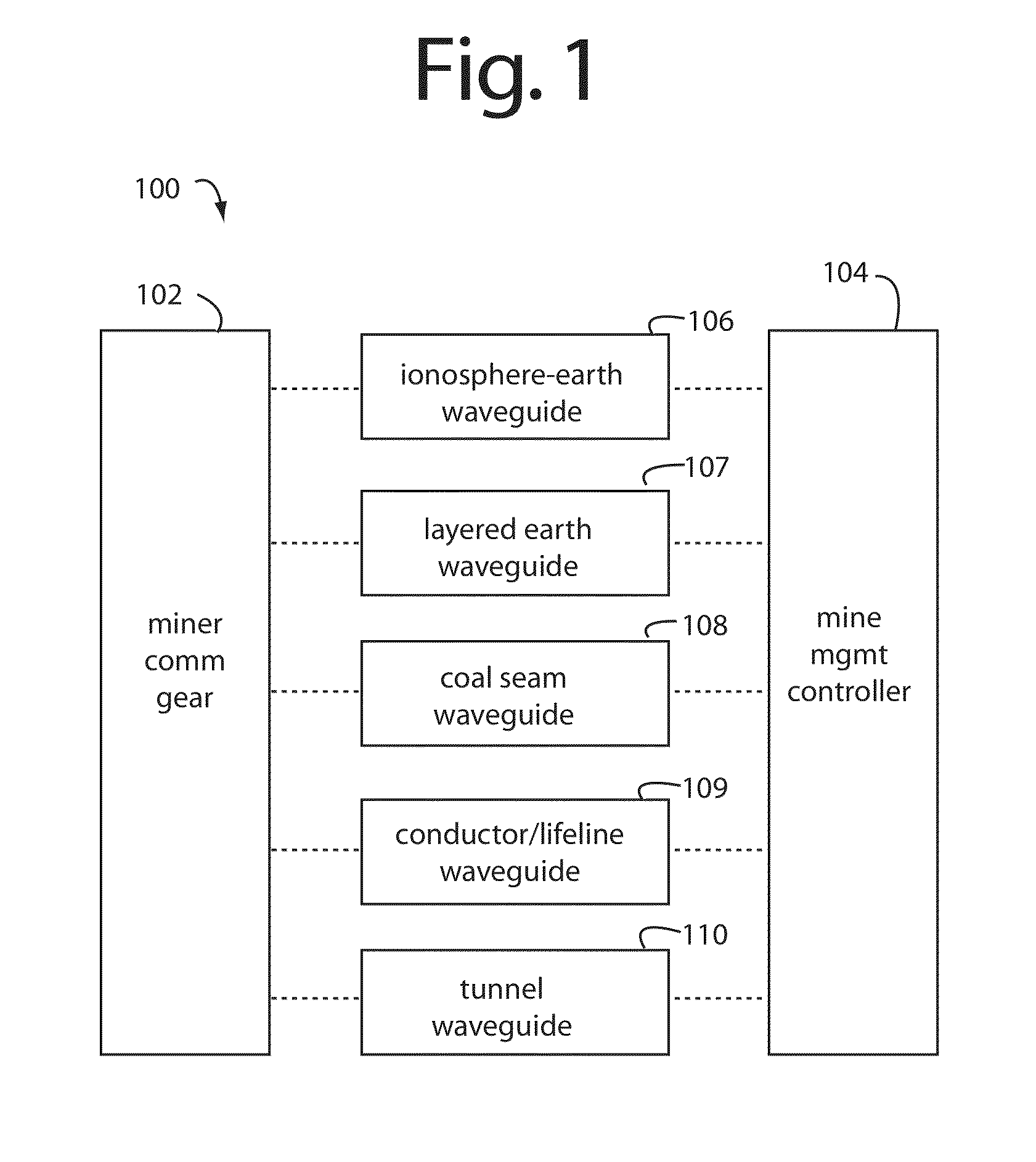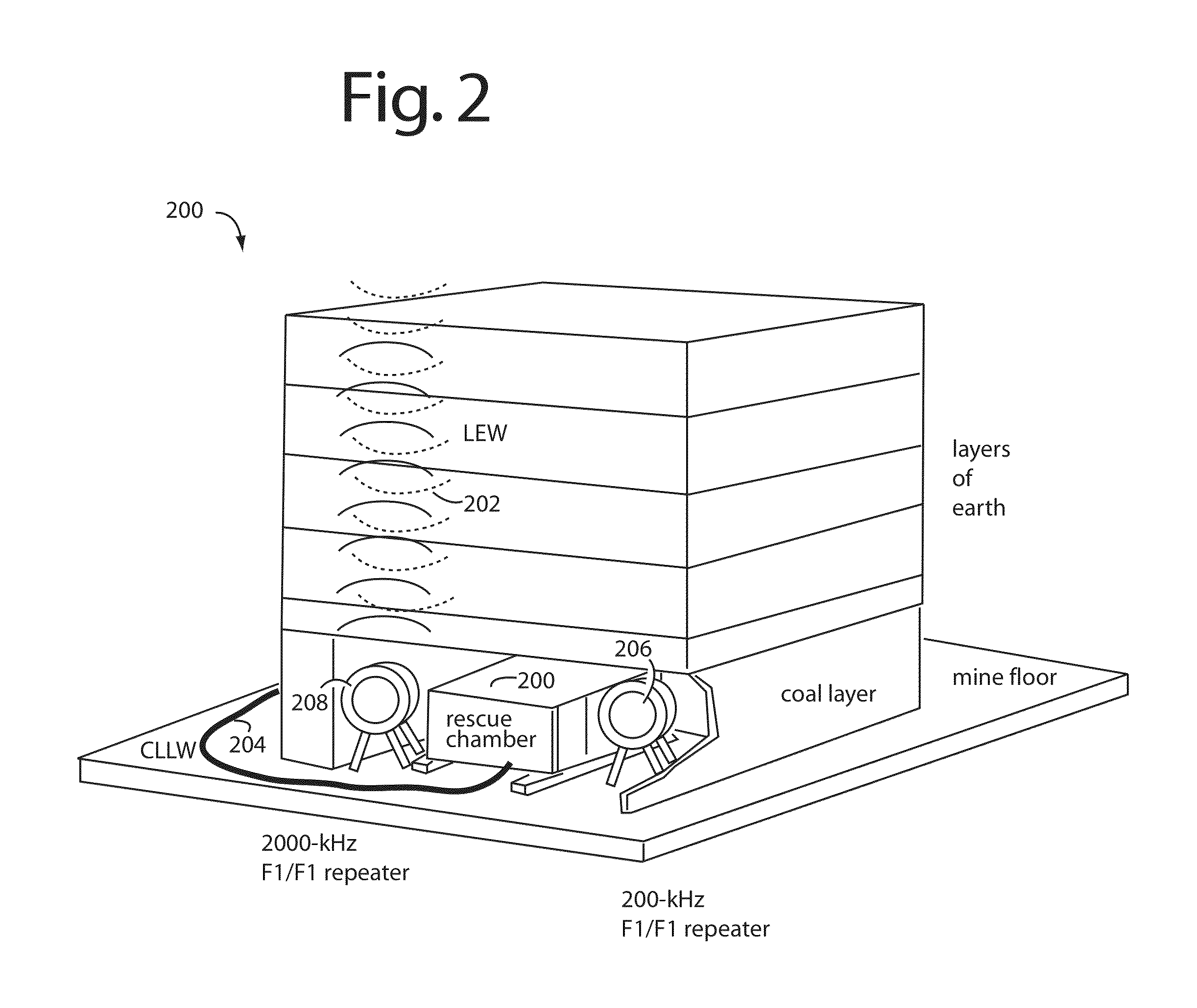Cap-lamp and communications support system
a technology of communication support system and caplamp, which is applied in the field of radio systems, can solve the problems of largely unresolved post-accident operational communication, difficult to provide cost-effective wireless mine-wide emergency, and the state of confusion, and the three-phase ac electrical power distribution and supporting messenger cables often survive catastrophes
- Summary
- Abstract
- Description
- Claims
- Application Information
AI Technical Summary
Benefits of technology
Problems solved by technology
Method used
Image
Examples
Embodiment Construction
[0039]In FIG. 1, a mine wide wireless emergency and operational radio communications and tracking system (RadCAT) 100 takes advantage of at least five different virtual radio waveguides that can be exploited within a typical mining complex infrastructure. Miner communication gear 102 is configured to communicate with a mine management controller 104 over several different radio communication medium and pathway channels 106-110. Each has an optimum carrier frequency and communication bit rate that is controlled by the physics on the mediums involved. For example, an ionosphere earth surface-waveguide (IEW) 106 can support multiple bands, a layered earth waveguide (LEW) 107 uses the ULF band and a 12-80 bps rate, a coal seam waveguide (CSW) 108 uses the LF band and an 1800-bps rate, a conductor / life line waveguide (CLLW) 109 uses the LF band and a 4800-bps rate, and a tunnel waveguide (TW) 110 can support a very wide bandwidth UHF / fiberoptic. The miner communication gear 102 and mine ...
PUM
 Login to View More
Login to View More Abstract
Description
Claims
Application Information
 Login to View More
Login to View More - R&D
- Intellectual Property
- Life Sciences
- Materials
- Tech Scout
- Unparalleled Data Quality
- Higher Quality Content
- 60% Fewer Hallucinations
Browse by: Latest US Patents, China's latest patents, Technical Efficacy Thesaurus, Application Domain, Technology Topic, Popular Technical Reports.
© 2025 PatSnap. All rights reserved.Legal|Privacy policy|Modern Slavery Act Transparency Statement|Sitemap|About US| Contact US: help@patsnap.com



